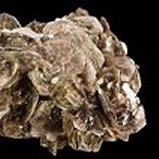
|
| Albites |
Albite, sodium aluminum silicate, is a form of feldspar, ranging in color from blue, brown, and red to white and colorless varieties. Albite is the last of the feldspars to crystallize from molten rock. The process of crystallization from molten rock serves to isolate uncommon elements in the last stages of crystallization and therefore produces rare mineral species. Thus albite is often found with some lovely rare and beautiful minerals.
The qualities of tact and cooperation are enhanced with albite, allowing one to find the flow in any relationship, situation, or activity. Fear of the unknown is eliminated while personal freedom through change is encouraged.
The qualities of tact and cooperation are enhanced with albite, allowing one to find the flow in any relationship, situation, or activity. Fear of the unknown is eliminated while personal freedom through change is encouraged.
Albite, which is a plagioclase feldspar mineral, is composed of sodium tectosilicate. It is a light mineral that is commonly found in granite rocks, and often occurs in association with tourmaline, quartz, and muscovite micas. Since it crystallizes at a lower temperature than the other feldspars, it often forms at the same time and in the same place as much rarer minerals. As a result of this, albite often forms an important part of many mineral collections, albeit for secondary reasons. It has a vitreous to dull luster and a white streak.
NaAlSi3O8 |
|